I LOVE LOOKING AT STATUES OF BUDDHA AND BODDHISATTVAS OR ENLIGHTENED BEINGS WHO POSTPONE THEIR ENTRY INTO NIRVANA TO STAY BACK ON EARTH TO HELP US SENTIENT SOULS!
My house is full of Buddha, Kuan Yin and Boddhisattva statues so I am living with the gods!
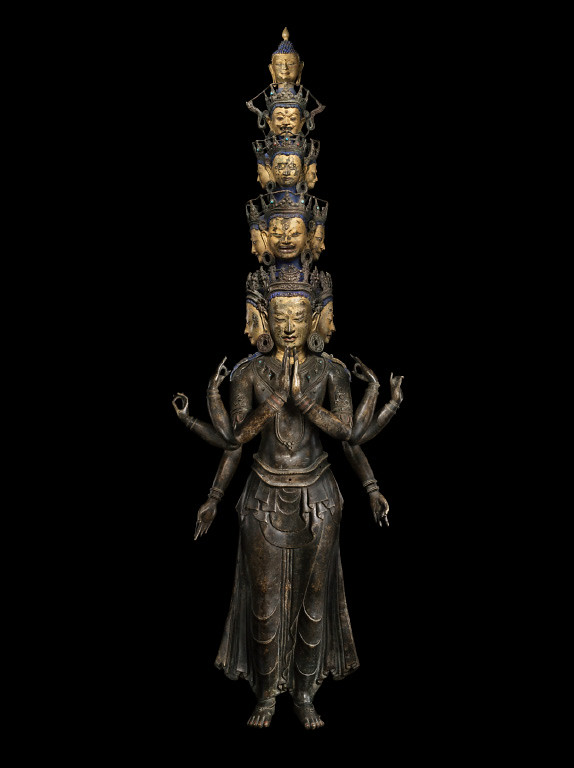
Avalokitesvara the God(dess) of Compassion I truly love this statue of a 11-headed Boddhisattva of Avalokitesvara, the merciful god or Kuan Yin in the Chinese pantheon.
Attempting to hear and comprehend the cries of suffering from so many humans, his head split into 11. Attempting to reach out his hands to help, his two arms splintered into a 1,000 arms.
Another version explains his name means 'he who hears the cries of the world' and in an act of omnipotence, he splits into 11 heads and a thousand arms and appears simultaneously in countless places so as to hear the prayers of supplicants.
Avalokitesvara or Chenrezig is also manifested in His Holiness the Dalai Lama who is just one of his manifestations as is the Karmapa Lama and other high lamas.
Avalokitesvara is also bisexual as he is often depicted as a female but with open chest revealing a man's bosom instead of breasts. Or he can simply be depicted as a serene goddess holding a lotus as Avalokitesvara also means 'Holder of the Lotus'.
No other god(dess) in other religions hold an ambiguous and intriguing sexuality as Avalokitesvara is both man and woman and yet neither which can be said to represent Nirvana, the ultimate state of existence when the person knows everything and is thus nothing!
This 14th century figurine is also the largest recorded early Tibetan bronze in existence. Many priceless statues were destroyed during the stupid Cultural Revolution of China in the 60s and 70s but this was foreseen in the 8th century by Padmasambhava who had subdued evil mountain deities into protectors of Tibet. Likewise, he predicted communist China, the destroyer of Tibet, would one day be its protector!
And it is coming true within our lifetime!
Alas this Avalokitesvara statue costs RM 30 million but Avalokitesvara tells me you can meditate using your mind and contact her for free anytime and anywhere! Just think of Avalokitesvara and she is here!

This 11-headed Avalokitesvara is yours for RM 30 million but you can call her name and pray to her for free using your mind!
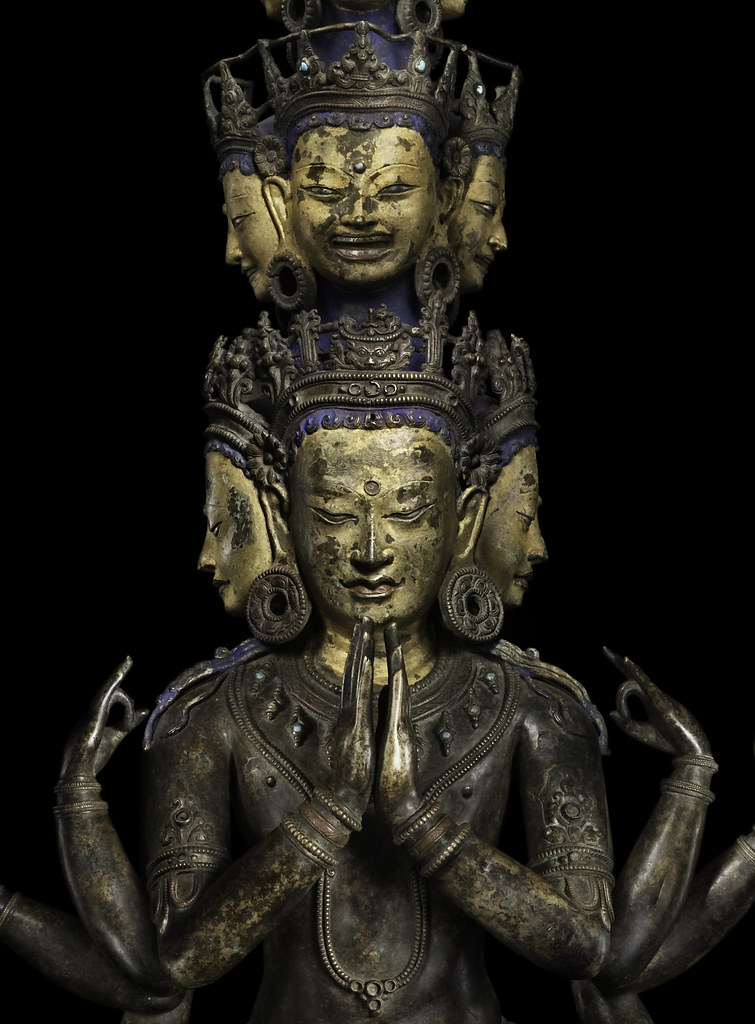
Close-up of the 11-headed, RM 30 million Avalokitesvara. Made around 1400, 120 cm bronze with silver inlay, semi-precious stones and polychrome
ROSSI &
ROSSI RETURN TO TEFAF MAASTRICHT
Spectacular
Tibetan Work from Acclaimed Bronze
Exhibition at Royal Academy for Sale
A spectacular Tibetan
bronze, one of the highlights of the recent Bronze
exhibition at the Royal Academy of Arts, London
Rossi & Rossi
specialise in Tibetan works of all periods and outstanding amongst those to be
seen at TEFAF will be the stunning eleven-headed Avalokitèshvara, dating from c. 1400 AD. Recently on loan to the highly-acclaimed Bronze exhibition at the Royal Academy Washington
DC
Also included in the Himalayas exhibition was the powerful
Tibetan figure of copper alloy with gilding and pigment depicting Mañjushrî
Yamântaka, c. 1000 AD. Yamântaka (Yama’s
Destructor or Yama’s Enemy – Yama meaning Death) is a wrathful assistant and
manifestation of the bodhisattva Mañjushrî.
This astonishingly energetic work is a triumphal manifestation of the
god: Yamântaka’s five heads wear tiaras bearing the images of the five cosmic
Buddhas while the upper one represents Mañjushrî. (fig. 2) Other fine Tibetan works include a striking 13th
century red and gold painted book cover carved with stylised dragons, and a 14th
century Mandala of Bhutadamara from Central Tibet, distemper on cloth, an
excellent example of its type.
An 18th century
gilded wood figure of Mahâkâla from China or Tibet was formerly in the Speed
Art Museum, Louisville, Kentucky. It
still bears a label recording the gift to the Museum in 1971 by the Museum
Collectors and was de-accessioned in 1996.
Nâtha Mahâkâla (Great Black Lord) is a Buddhist version of the Hindu god
Shiva in his manifestation as Kâla Bhàirava (Black Terrible), from whom this
Buddhist protector of the dharma or natural law has borrowed most of his
attributes, including the coronet of skulls, the necklace made of
freshly-severed human heads, the bowl fashioned from a human skull and the
rosary of skulls. Wearing a tiger skin
and wielding a knife, the god is shown trampling the Hindu elephant-headed god
Ganesha. Such wooden statues are found
in Tibetan-Buddhist monasteries as far north as Ladàk, but hardly ever have
this quality of modelling and are particularly rare because of the fragile
nature of the material.
A rare
and lyrical 14th century Nepalese group of Indra and Indrânî depicts the king of Hindu
gods, venerated in the Nepal Valley, accompanied by his consort, a mother
goddess personifying the god’s energy and active power. It is cast in copper by the lost-wax process
and fire-gilded by Newar artists under the Malla Dynasty. The heliotrope, or bloodstone, set in Indra’s
single-crested crown is a symbol of courage and wisdom.
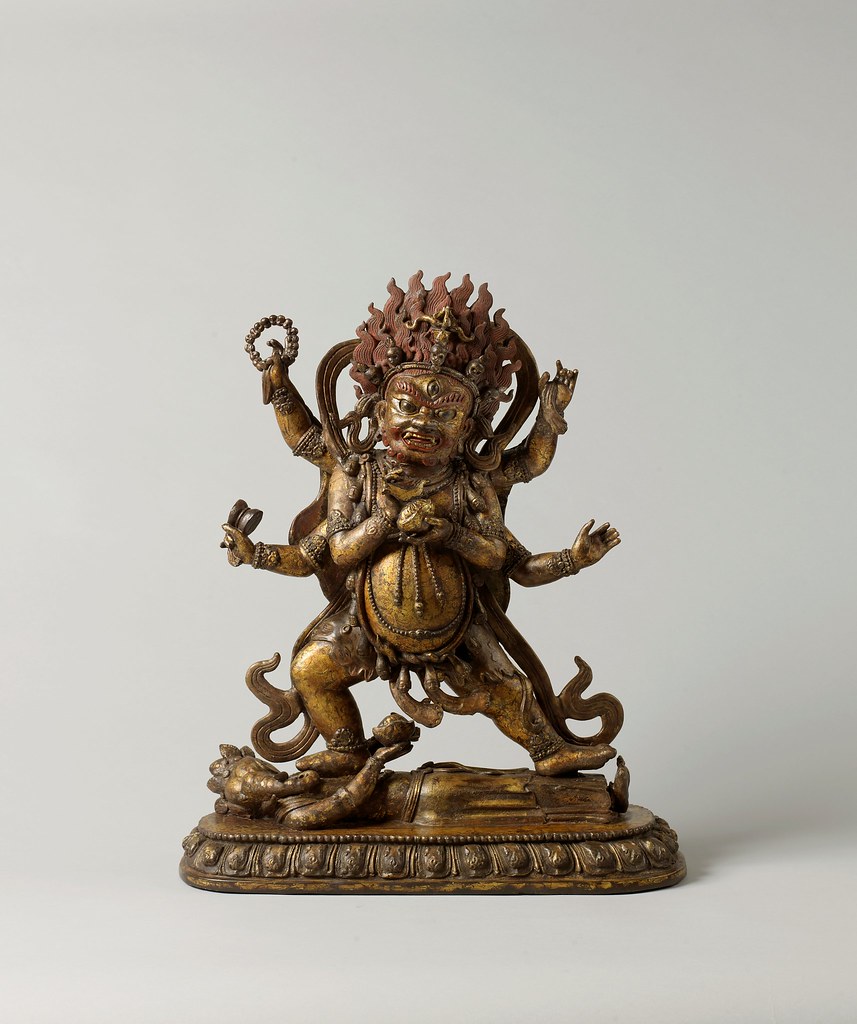
Book cover; 13th century carved and painted wood
Mandala of Bhutadamara; 14th century, distemper on cloth, 64 cm by 54 cm
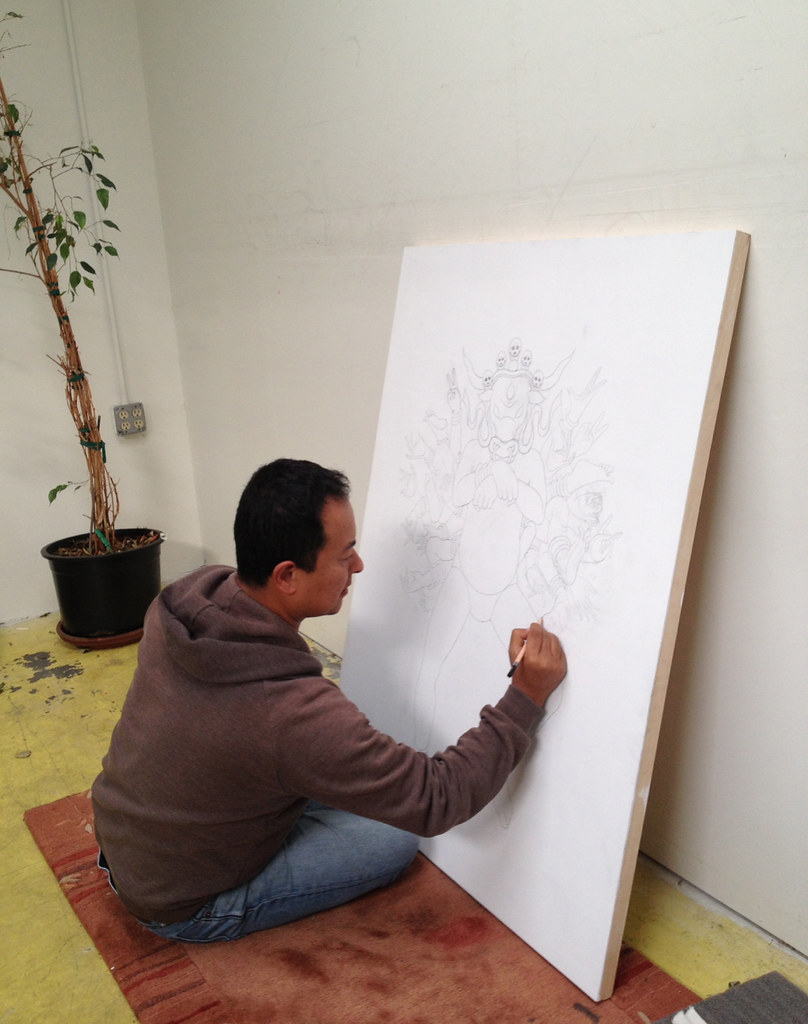
Tsherin Sherpa working on his work 'Conqueror' (Gangnam Style) to be unveiled at TEFAF 2013
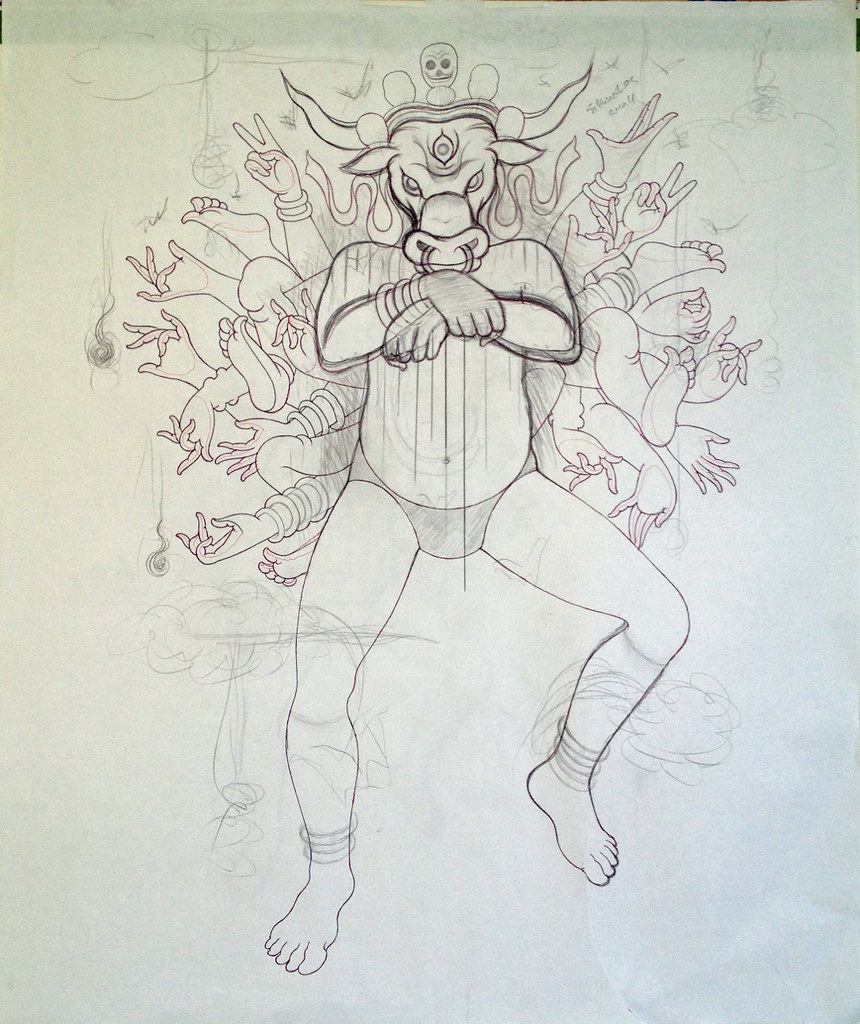
The yet unfinished 'Conqueror' (Gangnam Style) to be shown at TEFAF 2013

Tsherin Sherpa working on his work 'Conqueror' (Gangnam Style) to be unveiled at TEFAF 2013

The yet unfinished 'Conqueror' (Gangnam Style) to be shown at TEFAF 2013
Rossi & Rossi will
unveil at TEFAF a specially commissioned painting by Tibetan contemporary
artist Tsherin Sherpa, whose first one-man show in London in 2012 was a
sell-out. Conqueror (Gangnam Style) depicts a luminously coloured figure set
against a sumptuous gold leaf background performing the notorious dance move
while wearing a mask of Vajrabhairava, a wrathful form of Mañjushrî. Commenting on the work, Sherpa
said: “Vajrabhairava may seem like an
odd pairing with an international pop culture sensation but we live in a
disposable culture where anything long-lived is unusual. In Korea, the song exposed an ordinary man’s
attempt to integrate within the new materialism of his home. ‘Gangnam Style’ is continually being
transformed beyond this original meaning – as it spreads globally, individuals
have been re-transmitting the song using the lexicon from their own
culture. The dance’s addictive beat and
silly moves have allowed people the freedom to open up to discussions on
otherwise serious subject matters while at the same time outwardly seeming to be
light-hearted and fun. Contemporary artists
have embraced this medium to discuss freedom of expression with the help of
Amnesty International. In this Tibetan
manifestation, the dance mirrors a new global consciousness originating from
the desperation felt by self-immolating Tibetans.”
Born in
1968 in Kathmandu, Nepal, Sherpa began studying traditional Tibetan thangka painting at the age of twelve
under the skilful guidance of his father, Master Urgen Dorje, a renowned thangka artist from Ngyalam, Tibet. After years of intense training, Tsherin
studied Mandarin and computer science in Taiwan before returning to Nepal to
work with his father on numerous projects that included painting thangkas and monastery murals. He left for the USA
in 1998 and now lives in California
_______________________________________
Rossi & Rossi was
founded in London in 1985 by Anna Maria
Rossi who has been active in the field of Asian art for some 40 years. In 1988 she was joined by her son Fabio who had
studied at the School of Oriental and African Studies (SOAS). Together, they have established a reputation
as leading dealers in traditional Indian and Himalayan art, early Chinese and Central Asian textiles and works of art as well as
contemporary Asian art, particularly Tibetan. Their deep interest in both the art and
culture of the past and the vibrant and innovative art being produced by Asian
artists today is reflected in their international reputation for handling only
the finest pieces. Among their clients
are such institutions as The Metropolitan Museum of Art, New York, The
Cleveland Museum of Art, the Museum of Fine Arts ,
Houston , the Gallery of New South Wales in Sydney , the Ashmolean Museum
in Oxford and the Tokyo National
Museum
Rossi & Rossi
have published a number of scholarly works and regularly stage specialist and
ground-breaking exhibitions. The gallery
moved in 2007 to the current premises on the ground floor of an elegant 18th
century townhouse in the centre of Mayfair
enabling them to give greater prominence to contemporary Asian art while
continuing to show the traditional Tibetan and Himalayan art for which they are
renowned. In 2013, Fabio Rossi will open a new space within an industrial
building in the Wong Chuk Hang area of Hong Kong Island, where he will show
both classical and contemporary works.
_______________________________________
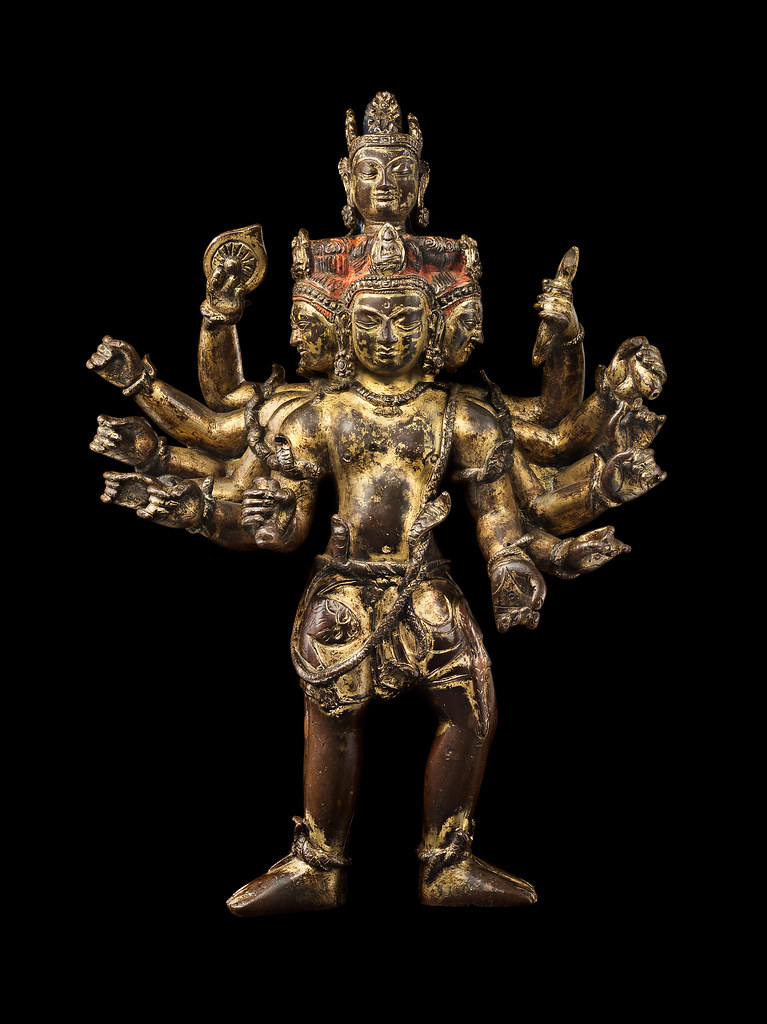
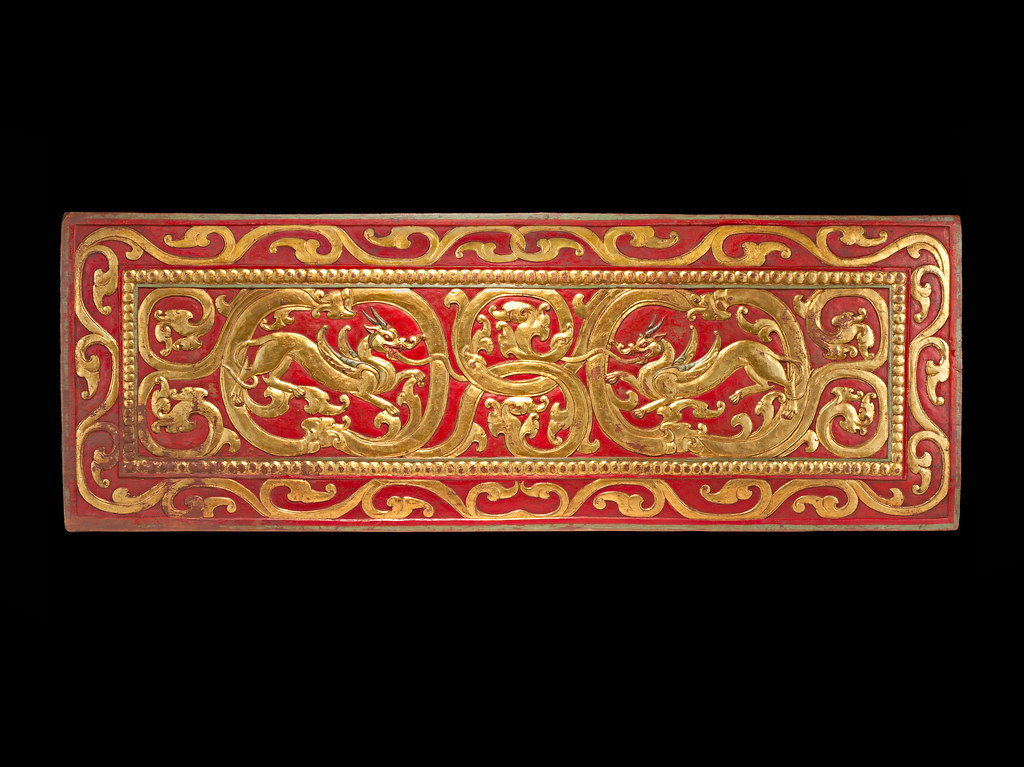
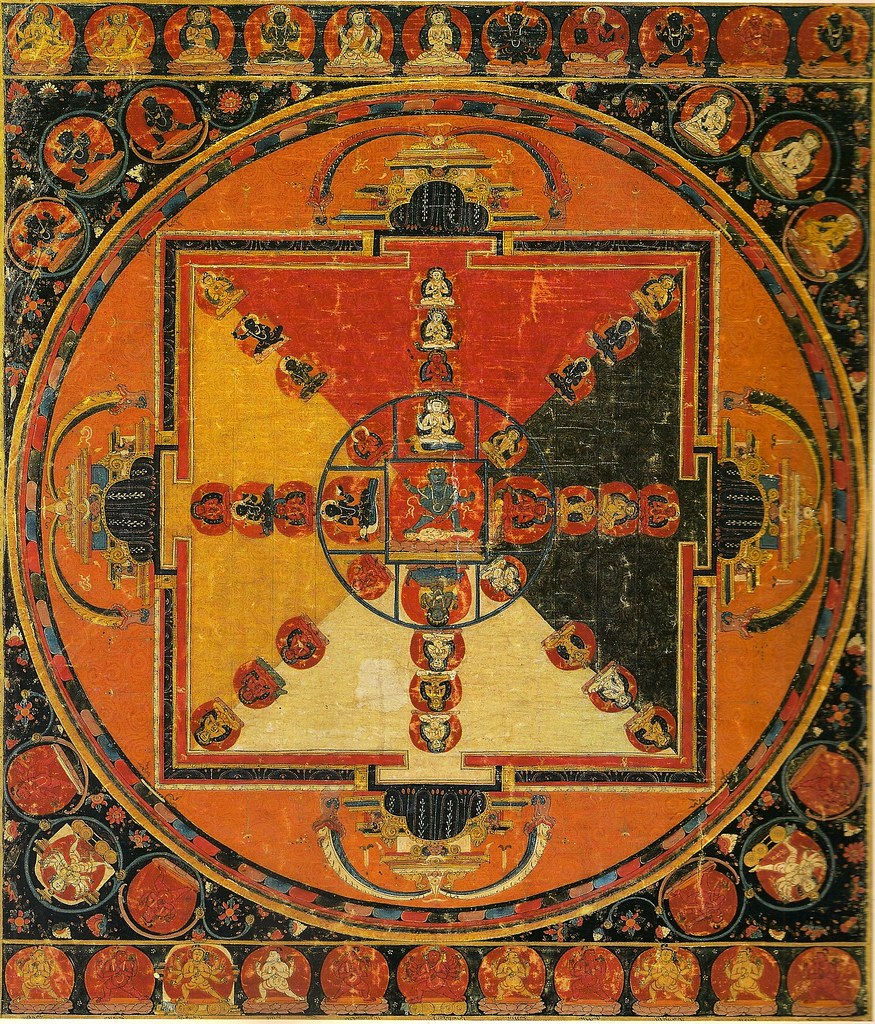
No comments:
Post a Comment